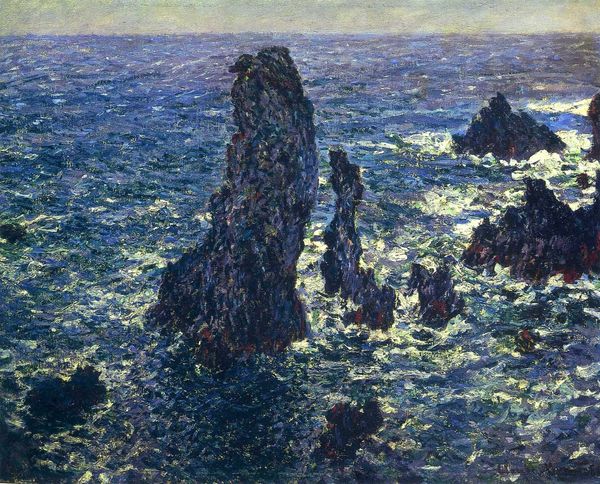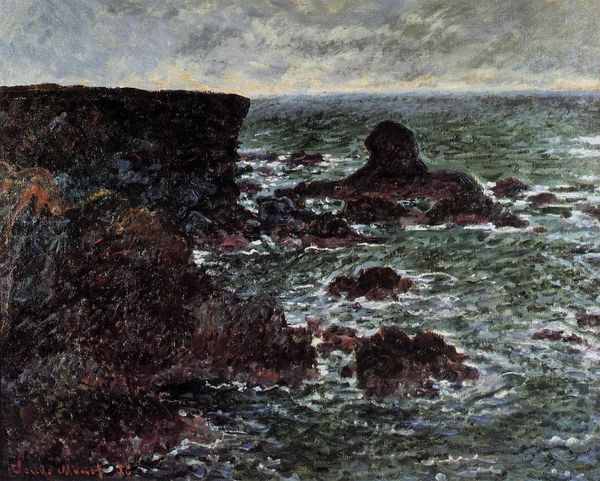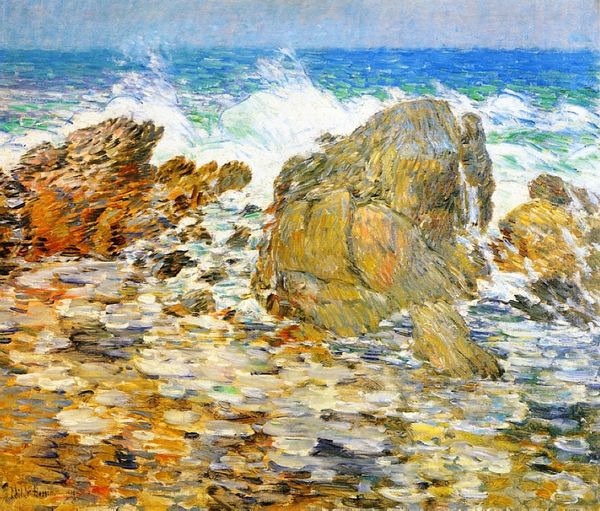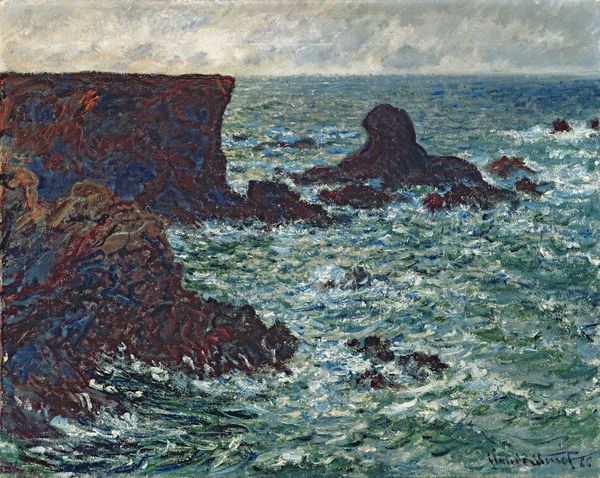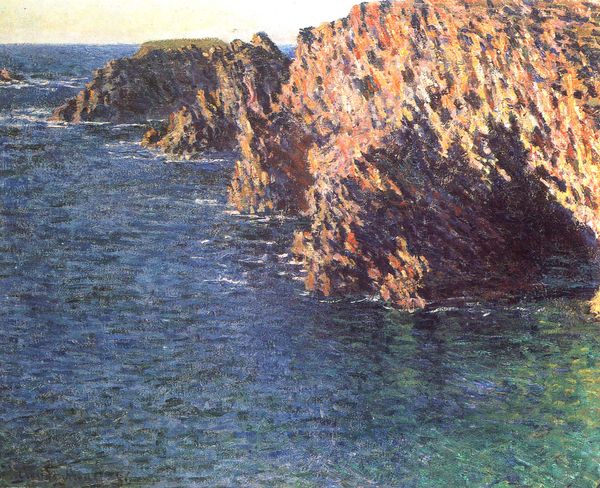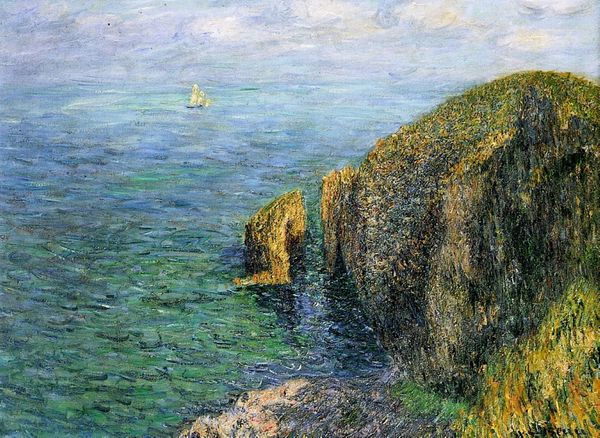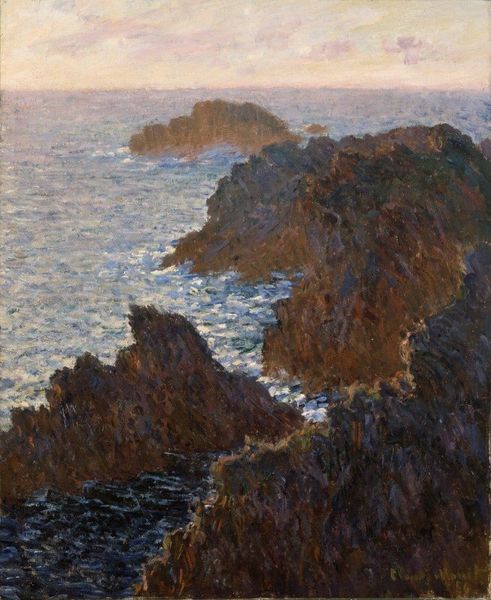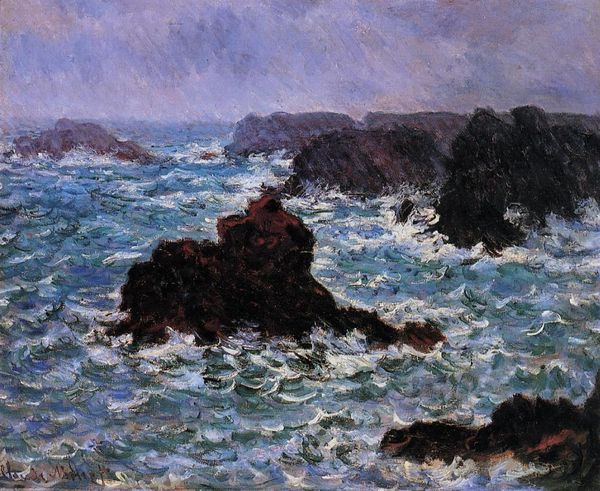
painting, oil-paint
#
painting
#
impressionism
#
oil-paint
#
landscape
#
impressionist landscape
#
nature
#
rock
#
seascape
#
water
#
post-impressionism
Copyright: Public domain
Claude Monet created "The Pyramids at Port-Coton," using oil on canvas, capturing a scene dominated by the imposing rock formations amidst the turbulent sea. The heavy impasto evokes the rough textures of the rocks and the dynamic movement of the water. Monet’s brushwork here is crucial. Short, broken strokes of blues, greens, and browns build up the form, yet simultaneously dissolve it into an interplay of light and color. The pyramidal rocks, rather than symbols of stability, become unstable forms, almost mirages shaped by the very act of perception. This approach challenges fixed meanings and engages with new ways of thinking about perception. The painting destabilizes our understanding of landscape as a stable, objective reality, presenting it instead as a fluid, subjective experience. The texture and color function not just aesthetically but engage with broader philosophical discourses about the nature of reality and perception. This constant re-interpretation underscores the evolving dialogue between art and its audience.
Comments
No comments
Be the first to comment and join the conversation on the ultimate creative platform.
